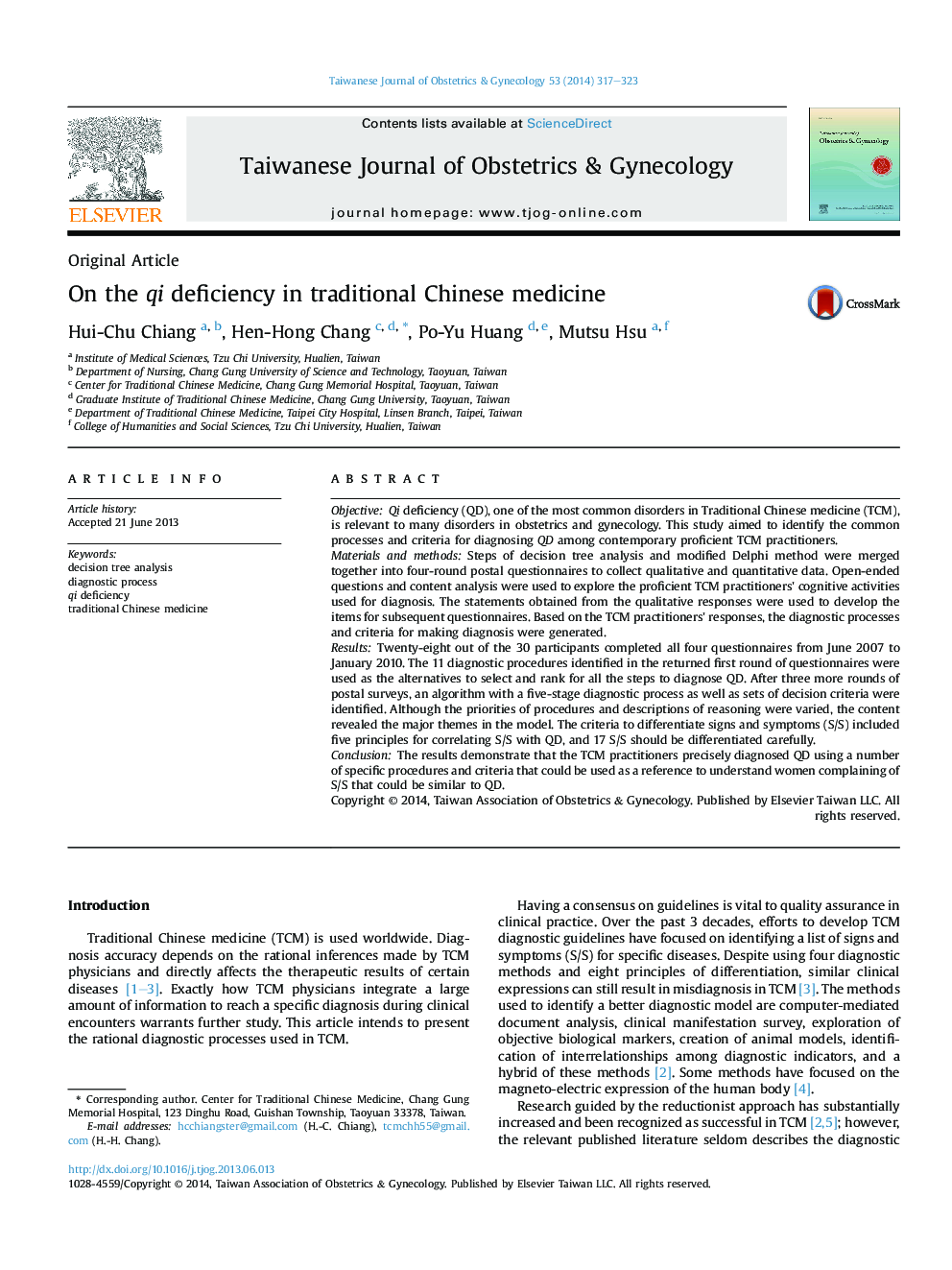| Article ID | Journal | Published Year | Pages | File Type |
|---|---|---|---|---|
| 3975199 | Taiwanese Journal of Obstetrics and Gynecology | 2014 | 7 Pages |
ObjectiveQi deficiency (QD), one of the most common disorders in Traditional Chinese medicine (TCM), is relevant to many disorders in obstetrics and gynecology. This study aimed to identify the common processes and criteria for diagnosing QD among contemporary proficient TCM practitioners.Materials and methodsSteps of decision tree analysis and modified Delphi method were merged together into four-round postal questionnaires to collect qualitative and quantitative data. Open-ended questions and content analysis were used to explore the proficient TCM practitioners' cognitive activities used for diagnosis. The statements obtained from the qualitative responses were used to develop the items for subsequent questionnaires. Based on the TCM practitioners' responses, the diagnostic processes and criteria for making diagnosis were generated.ResultsTwenty-eight out of the 30 participants completed all four questionnaires from June 2007 to January 2010. The 11 diagnostic procedures identified in the returned first round of questionnaires were used as the alternatives to select and rank for all the steps to diagnose QD. After three more rounds of postal surveys, an algorithm with a five-stage diagnostic process as well as sets of decision criteria were identified. Although the priorities of procedures and descriptions of reasoning were varied, the content revealed the major themes in the model. The criteria to differentiate signs and symptoms (S/S) included five principles for correlating S/S with QD, and 17 S/S should be differentiated carefully.ConclusionThe results demonstrate that the TCM practitioners precisely diagnosed QD using a number of specific procedures and criteria that could be used as a reference to understand women complaining of S/S that could be similar to QD.
